Sky alert! Asteroid 2004 BL86 to sweep close on January 26
The wonderful New Year’s comet – Comet C/2014 Q2 Lovejoy – is now heading for its January 30 perihelion, or closest point to the sun (120 million miles/ 193 million km away). Yes, it still appears as a hazy, greenish dot in our sky, at the edge of visibility to the unaided eye, but certainly visible through binoculars and telescopes. The comet passed closest to Earth on January 7, when it was 43.6 million miles away / 70.2 million km from us. On January 9, it crossed over into the easy-to-find constellation Taurus the Bull. It’s now near the easy-to-see Pleiades star cluster, sometimes called the Seven Sisters. Look below for charts and some recent photos. And check back because new photos are coming in every day now. Follow the links below for more.
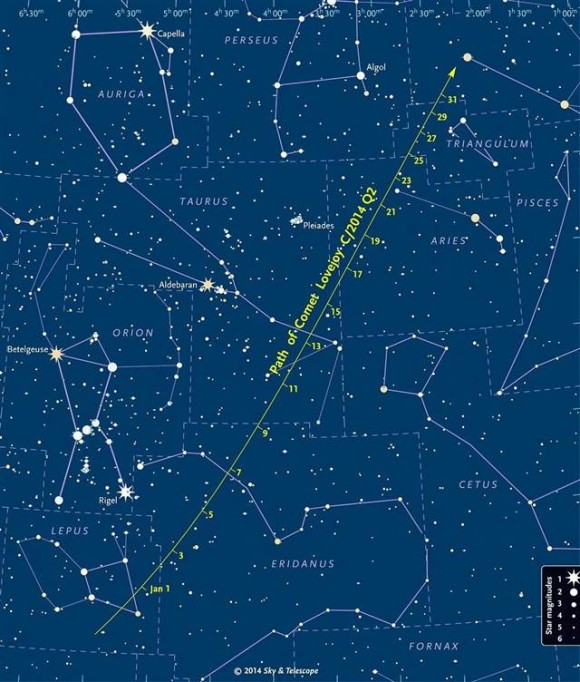
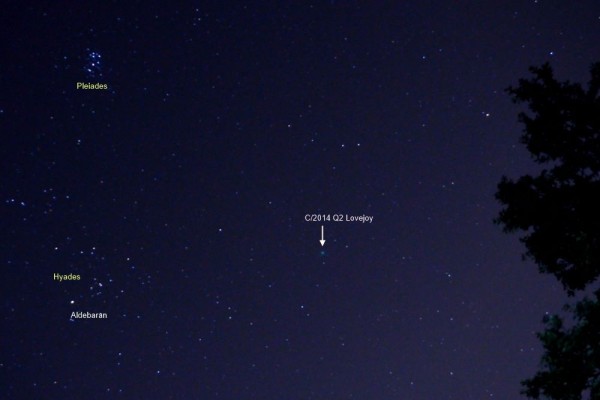
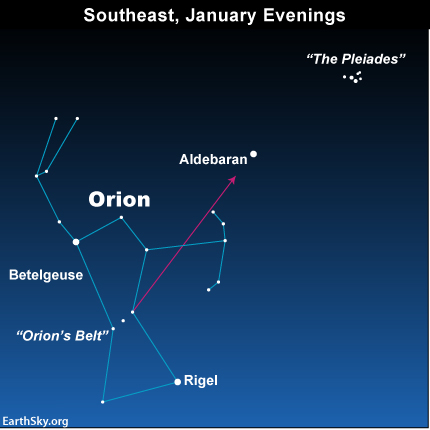
How to see Comet Lovejoy. The comet has been heading northward on the starry dome, and it’s now in and among what we in the Northern Hemisphere consider the “winter” constellations. It’s in front of the constellation Taurus at this writing (January 15, 2015). Don’t know Taurus? Do this:
1. Go outside in the evening. Look southward if you’re in the Northern Hemisphere and overhead if you’re in the Southern Hemisphere. You’re looking for three stars in a short, straight row. These stars are in the constellation Orion the Hunter and mark the Hunter’s Belt.
2. Notice that the medium-bright Belt stars point toward two brighter stars. In one direction, the Belt stars point toward Sirius, sky’s brightest star. In other other direction, the Belt stars point toward the reddish star Aldebaran, fiery Eye of the Bull in Taurus. Forget about Sirius for now. Look at Aldebaran.
3. The star Aldebaran is part of a V-shaped cluster of stars called the Hyades. Look for this V of stars. If you see it, you know you’ve found the Face of Taurus the Bull. If you’re in the Northern Hemisphere, the comet will be to the right of Orion’s Belt and this V-shaped cluster – the Bull’s Face – beginning around January 9.
4. Now look for the Pleiades, sometimes called the Seven Sisters. It looks like a tiny, misty dipper in our sky – very noticeable! Then check the charts above. Night by night, the comet is edging up toward the Pleiades, which is making it easier than ever to find.
5. How can you see the comet? Your best bet is to sweep with binoculars near the V-shaped Hyades cluster, with its bright star Aldebaran, and the tiny, misty, dipper-shaped Pleiades. What does sweep mean? It means to scan the sky in an orderly way, back and forth, until you notice a round, fuzzy spot that does not look like a star.
Comet Lovejoy is now barely at the limit for seeing with the unaided eye. SkyandTelescope.com reported on January 14:
Comet Lovejoy, C/2014 Q2, is in the midst of its best two weeks. It’s about magnitude 3.8, as bright as it should get. Use the finder charts at the bottom of this page to find its location among the stars. Although magnitude 3.8 ought to make it a naked-eye object, its diffuse fuzziness means that most viewers, who live under light pollution, still need optical aid. In binoculars it’s a biggish, gray fuzzball, with a brighter core slightly off center. Can you see signs of the dim tail?
Other observers using binoculars and small telescopes have described the comet as:
… a circular patch of white light, roughly half the apparent width of the moon.
The comet most definitely has a tail as seen in photos; we’ve heard some reports that it has lost and regained its tail a few times over the past weeks.
Comet Lovejoy will cross into the constellation Triangulum on January 25. On February 4, it will have a close conjunction with beautiful double star Almach (gamma Andromedae).

More about Comet Lovejoy. Australian comet-hunter Terry Lovejoy found this comet just before dawn on August 17, 2014 on CCD camera images, while using a Celestron C-8 telescope. Lovejoy was observing from Birkdale, Queensland, Australia. It’s his fifth comet discovery since 2007.
Comets tend to brighten as they draw nearer the sun that binds them in orbit. Comet C/2014 Q2 Lovejoy is no exception; over the past months, it has been getting brighter at it heads toward its January 30 perihelion (closest point to the sun). The comet’s coma (or atmosphere surrounding the comet’s icy nucleus) has grown as the comet has neared the sun.
Comet Lovejoy was closest to Earth on January 7, 2015. It didn’t come very close to us, hundreds of time farther away than Earth’s moon. At its closest, it was some 43.6 million miles away (70.2 million km). However, its closest point to Earth marked the beginning of the best time to see the comet.
Comet C/2014 Q2 Lovejoy is a very long-period comet. On the way into the inner solar system, at this return, its path was indicating an orbital period of roughly 11,500 years. But the gravity of our solar system’s planets is thought to have altered the comet’s orbit a bit. Its next return is now being projected for about 8,000 years from now.
Enjoy the photos below and be sure to check back! We’re receiving more wonderful photos of this comet every day.
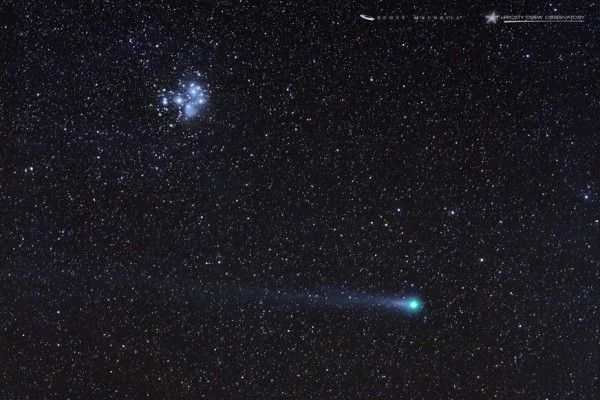
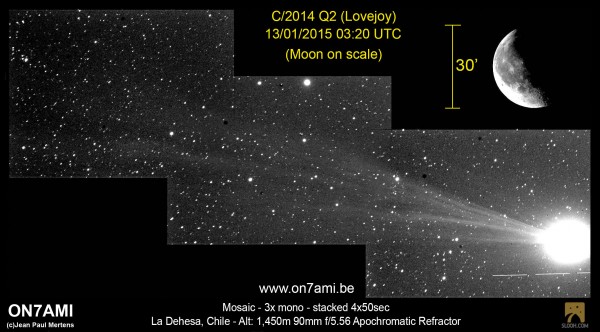

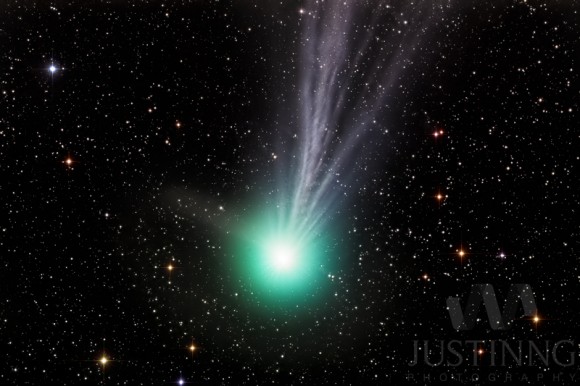
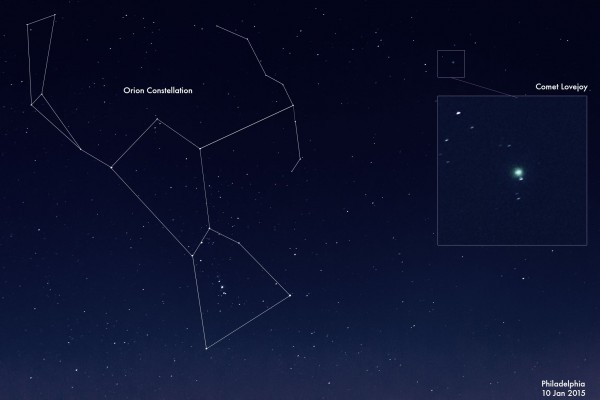
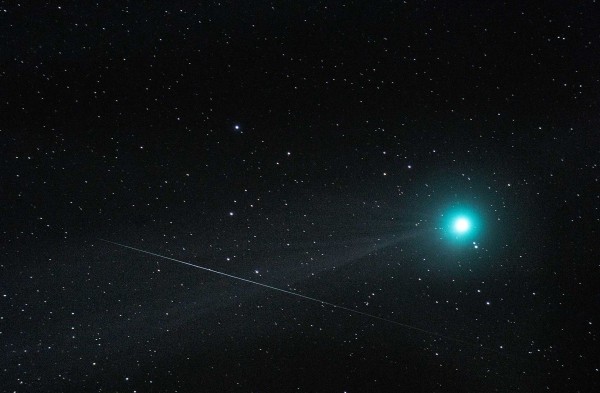
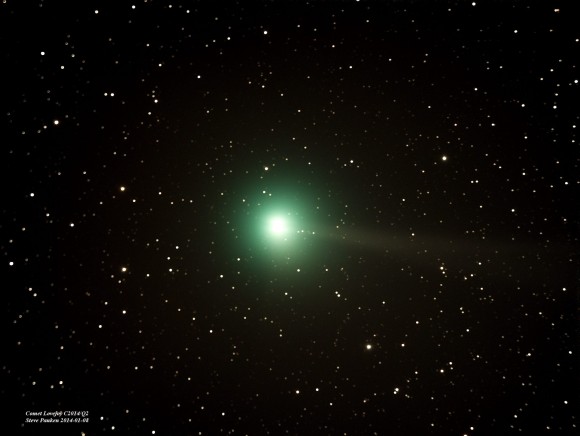
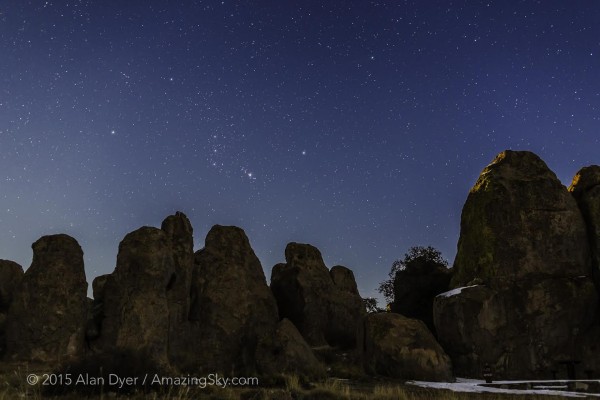
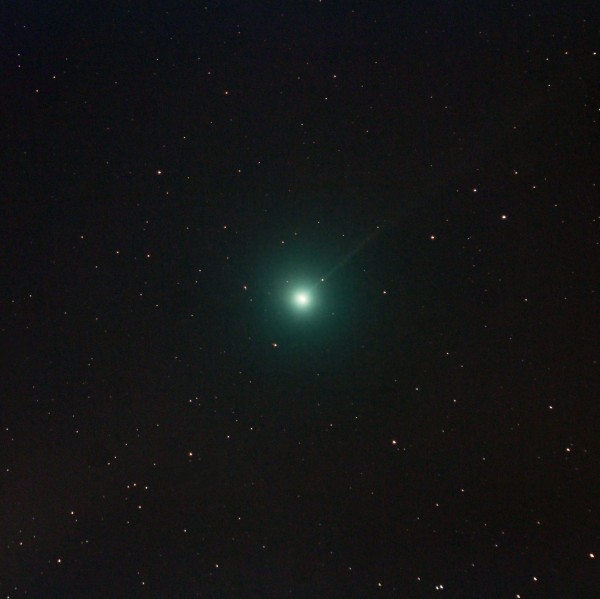
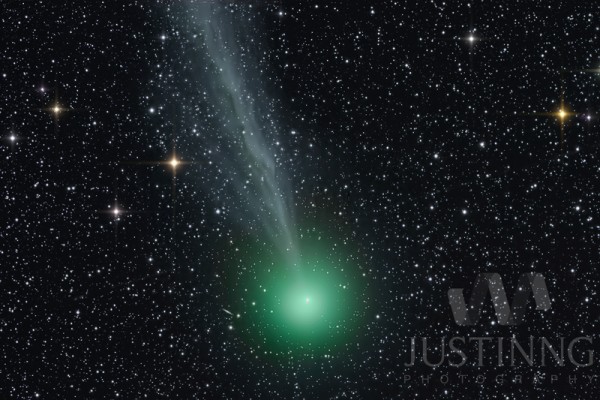
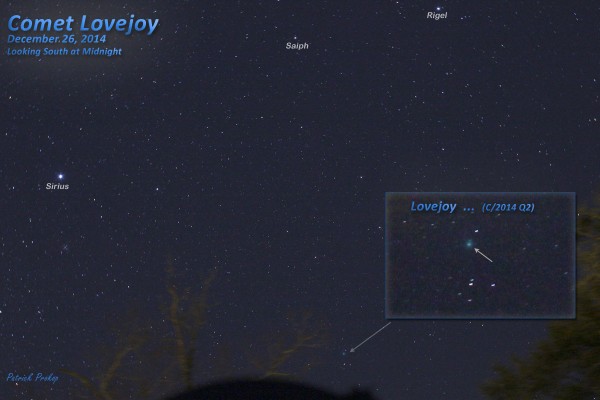
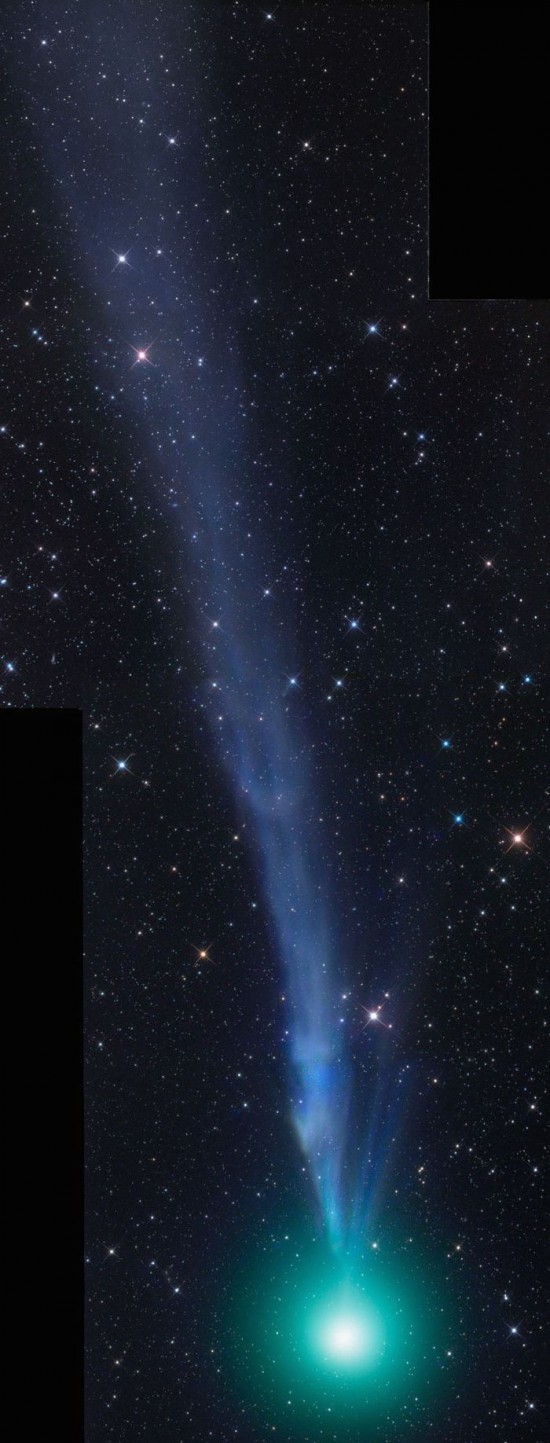
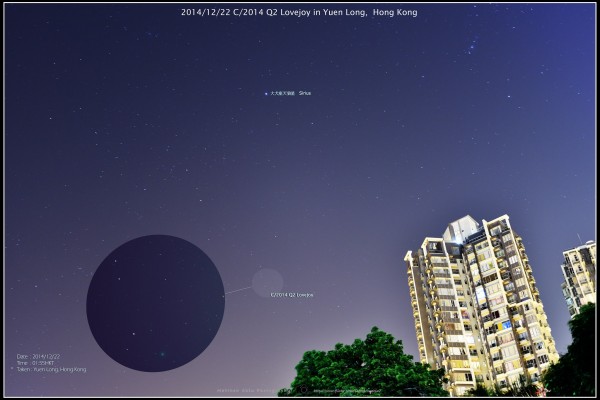
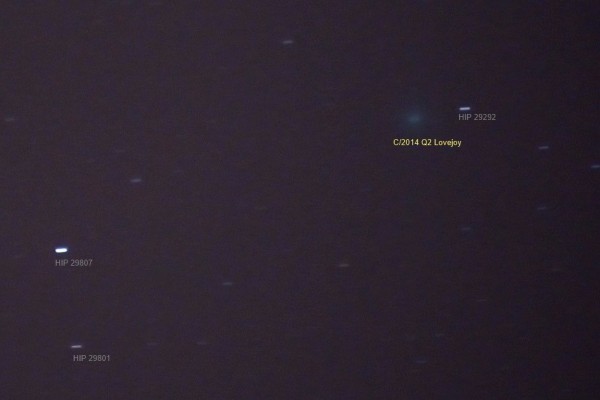
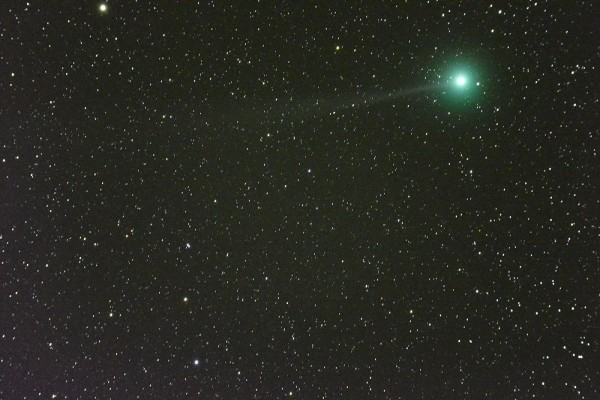
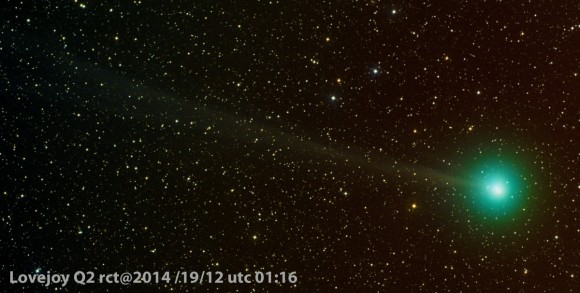
Bottom line: How to see Comet Lovejoy, Terry Lovejoy’s 5th comet, plus photos of the comet taken from around the world. This comet is now well placed for viewing from around the globe and will be moving higher in our Northern Hemisphere skies throughout January, 2015. The comet was closest to Earth on January 7, 2015. That point marked the beginning of the best time to see the comet for about a two-week period.











